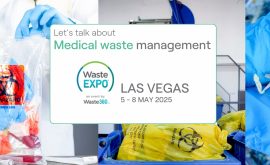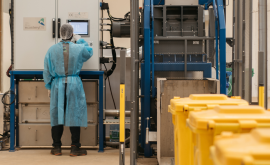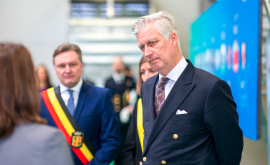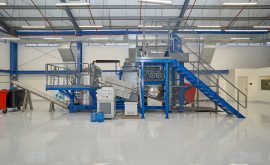Medical waste at the heart of the pandemic
Five years ago, COVID-19 disrupted our world… What have we learned?
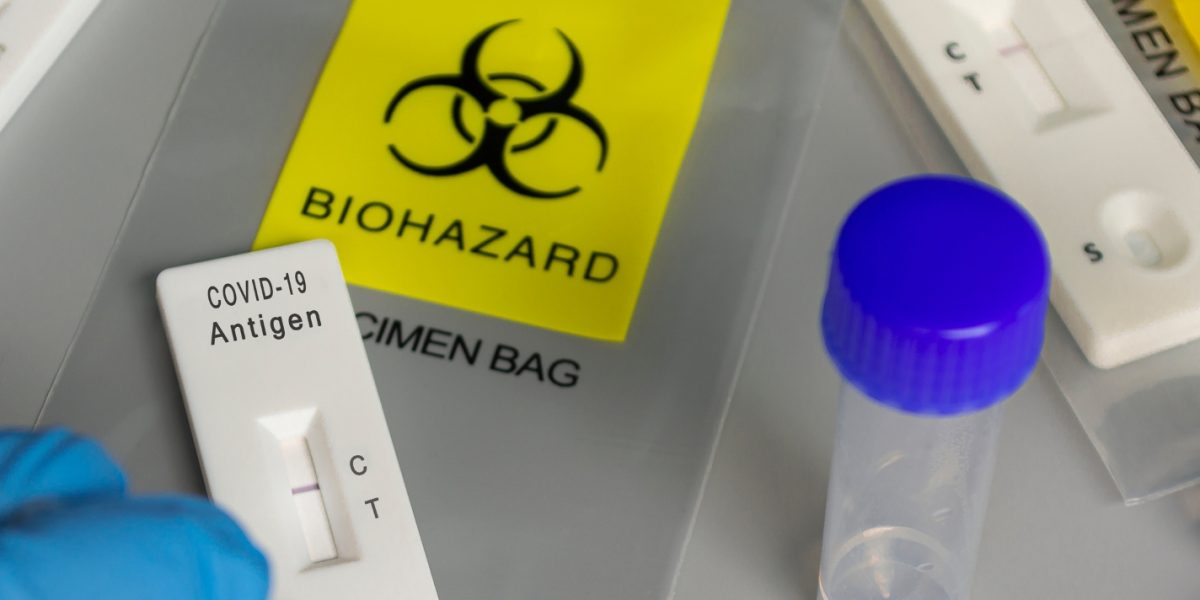
Five years ago, an invisible threat disrupted our world, shedding light on many aspects.
Beyond buying toilet paper in large quantities, cleaning our groceries with brushes, and checking on what the neighbor was doing, we mainly ensured not to get infected and to care for those who were. The essential returned to the center of our concerns: our health. And, of course, the crucial role of healthcare workers and our healthcare system. Additionally, the management of our medical waste, which was itself infected.
The COVID-19 pandemic led to an unprecedented increase in healthcare-related waste: personal protective equipment (PPE), tests, syringes… A true surge of biomedical waste that strained waste management systems worldwide. Remember, we were all masked, and masks were expensive. According to the WHO, between March 2020 and November 2021, over 87,000 tons of PPE were distributed, generating a major environmental challenge. So, what do we take away from this crisis today?
How did Ecosteryl experience COVID-19?
 While everyone stayed home to avoid contamination, Ecosteryl’s teams were on the front lines. Business opportunity? Some might say so, even though a machine cannot be delivered to a new client in two weeks when, moreover, the whole world is at a standstill. The client needs authorizations, a location, a sustainable business, funds… While hand sanitizer or masks were quick business opportunities, starting a medical waste treatment center is another matter. Building, treatment machine, bin washer, trucks, etc.: such an investment amounts to hundreds of thousands of euros.
While everyone stayed home to avoid contamination, Ecosteryl’s teams were on the front lines. Business opportunity? Some might say so, even though a machine cannot be delivered to a new client in two weeks when, moreover, the whole world is at a standstill. The client needs authorizations, a location, a sustainable business, funds… While hand sanitizer or masks were quick business opportunities, starting a medical waste treatment center is another matter. Building, treatment machine, bin washer, trucks, etc.: such an investment amounts to hundreds of thousands of euros.
Those who were put to the test were our existing clients, those who were already operating. Some had purchased a machine that we had to install remotely via video call; others had been equipped recently, perhaps those with foresight, and the machine was immediately used at 100% capacity; others hesitated on a new purchase and regretted their hesitation. All had teams working non-stop. Kudos to all these behind-the-scenes operators who were in contact with what no one wanted to touch: infected medical waste.
In the end, it was mainly governments and international organizations that had to face an unprecedented crisis and find solutions.
Ecosteryl, like other companies active in medical waste disinfection, had much more interaction with the WHO, UNICEF, UNDP, the World Bank, etc., which had budgets to intervene urgently in territories facing large-scale health risks. Ecosteryl also assisted the Walloon Government with a mask disinfection solution, the M-steryl. In less than a month, a machine was available on the market and tested. A machine that did not succeed once COVID ended but once again proved the dry heat disinfection technique and allowed Ecosteryl to collaborate with research institutes and demonstrate its proactivity in seeking solutions.
In one month, in March 2020, medical waste received unprecedented marketing promotion. What changed was felt more the following year, in the awareness of the impact and importance of this waste in the funds available to hospitals, for example. Hospitals that no longer wanted to experience overflowing bins. Service providers who could no longer process their waste.
An example is the Valenciennes hospital in France, which explains it well in this video.
Have measures been taken to avoid an overload of untreated medical waste?
Faced with this massive accumulation, it became urgent to improve medical waste management. While sorting and disposal protocols were strengthened in some countries, the crisis mainly revealed gaps: insufficient treatment infrastructure, excessive reliance on incineration, and lack of viable ecological alternatives.
Five years later, we still see the effects through the words of some potential and new clients:
“We no longer want to experience what we went through during COVID.”
For Ecosteryl and many other companies active in waste neutralization, the risk remains of having too strong a lobbying for incineration as the ideal solution. Incineration is certainly useful, but it should be a last resort, not the first option.
The order of priorities should be as follows:
- Disinfection
- Sorting
- Recovery
- Incineration or landfill
Medical waste management: lessons from the COVID-19 pandemic according to the WHO.
We had our field vision in our domain, but ultimately, what does the World Health Organization (WHO) recommend? The WHO has published several recommendations to oversee this management and avoid disastrous health and environmental consequences. Several documents are available here.
As we commemorate the anniversary of this pandemic, it is interesting to revisit these lessons and consider the future of biomedical waste.
Sorting and treating waste: an absolute necessity
One of the major lessons from the crisis is the importance of waste sorting at the source. The WHO reminds us that:
- Infectious waste (contaminated bandages, sharps, anatomical waste) must be separated from non-hazardous waste and collected in specific containers.
- The majority of hospital waste is non-infectious (packaging, food waste, paper towels) and can be treated as regular municipal waste.
This distinction is essential to avoid overloading medical waste treatment channels and to limit contamination risks.
The hidden dangers of biomedical waste treatment revealed by the COVID-19 pandemic.
Managing COVID-19 waste does not only concern PPE. Some chemicals used in diagnostic tests also present risks:
- Guanidinium thiocyanate, present in some RNA extraction kits, reacts dangerously with bleach, producing toxic gases.
- Sodium azide, a component of immunological tests, should neither be disposed of down the drain nor autoclaved, as it can form explosive substances.
Is another health crisis possible?
Experts agree that another pandemic of COVID-19’s magnitude is inevitable. Figures like Professor Sir Chris Whitty, British epidemiologist and Chief Medical Officer for England, who played a central role in managing COVID-19 in the UK, have warned that we must actively prepare for it, as our healthcare infrastructures and waste management capacities could once again be overwhelmed.
Should we live in fear? No. But anticipation and innovation are the keys to better resilience.
Let’s not forget that COVID still exists, that we saw Mpox emerge, that Ebola is still very present, etc.
COVID-19 has shaken our certainties and highlighted the need to rethink our industrial and environmental models. Among the major lessons:
- Environmental awareness: the need to adopt more environmentally friendly waste treatment technologies.
- The importance of circularity: transforming medical waste into new raw materials is now a priority to avoid accumulation and reduce pressure on our natural resources.
- A need for increased responsiveness: infrastructures must be adaptable and scalable to respond quickly to new health crises.
Building a safer future together to manage infectious medical waste
Five years after the onset of COVID-19, the world has changed. Medical waste management is no longer a simple logistical issue but a public health and sustainable development challenge. It is imperative to continue on this path, invest in smart solutions, and strengthen our resilience to future crises. We have learned, grown, and evolved. Now, it’s time to act.
Do you want to innovate responsibly in medical waste treatment?
Send us an email at sales@ecosteryl.com
Sources used in the writing of this blog article:
- World Health Organization (WHO). (n.d.). Information documents on the novel coronavirus (2019-nCoV). Retrieved from https://www.who.int/fr/emergencies/diseases/novel-coronavirus-2019/technical-guidance.
- World Health Organization (WHO). (2024, March 11). Laboratory biosafety guidance related to SARS-CoV-2 (COVID-19). Interim guidance, updated March 11, 2024. Retrieved from https://iris.who.int/bitstream/handle/10665/376333/WHO-WHE-EPP-2024.3-fre.pdf.
- World Health Organization (WHO). (2023, January 13). Infection prevention and control in the context of coronavirus disease 2019 (COVID-19): evolving guidance. Retrieved from https://iris.who.int/bitstream/handle/10665/366635/WHO-2019-nCoV-ipc-guideline-2023.1-fre.pdf.
- World Health Organization (WHO). (2020, July 29). Water, sanitation, hygiene, and waste management related to SARS-CoV-2, the virus responsible for COVID-19. Interim guidance. Retrieved from https://iris.who.int/bitstream/handle/10665/334037/WHO-2019-nCoV-IPC_WASH-2020.4-fre.pdf?sequence=1.

